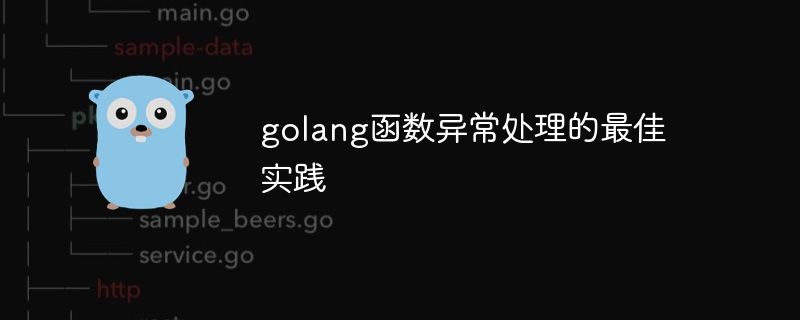
The best practice for handling function exceptions in Go is to avoid using panic and instead return an error object to provide more detailed information. Use defer and recover to safely close resources and catch and handle panics. Use custom error types to provide more specific and readable error messages. Wrap errors to provide more detailed information. Take appropriate action based on the severity of the error. Write unit tests to cover error handling logic.

Best practices for function exception handling in Go
Basic principles of exception handling
In Go, exception handling follows the following basic principles:
panic: panic will cause the program to immediately Exits with an error, which is not ideal for most situations. defer and recover: defer allows you to perform some cleanup before the function returns, while recover Can catch errors when a panic occurs. Practical Case
Consider the following function that opens and reads a file and prints its contents to standard output:
func readFile(filename string) {
f, err := os.Open(filename)
if err != nil {
panic(err)
}
defer f.Close()
data, err := ioutil.ReadAll(f)
if err != nil {
panic(err)
}
fmt.Println(string(data))
}Apply Best Practices
Let’s apply best practices to improve this function:
panic: Replace panic with returning an error object for more detailed error information. defer and recover: For operations that may throw errors (such as opening and reading files), use defer and recover to safely close the file and print an error message if a panic occurs. Improved functions are as follows:
func readFile(filename string) error {
f, err := os.Open(filename)
if err != nil {
return err
}
defer func() {
if err := recover(); err != nil {
fmt.Println("Error:", err)
}
if err := f.Close(); err != nil {
fmt.Println("Error closing file:", err)
}
}()
data, err := ioutil.ReadAll(f)
if err != nil {
return err
}
fmt.Println(string(data))
return nil
}Other best practices
The above is the detailed content of Best practices for exception handling in golang functions. For more information, please follow other related articles on the PHP Chinese website!
 How to define variables in golang
How to define variables in golang
 What are the data conversion methods in golang?
What are the data conversion methods in golang?
 What are the commonly used libraries in golang?
What are the commonly used libraries in golang?
 What is the difference between golang and python
What is the difference between golang and python
 nginx restart
nginx restart
 What is a hidden element in jquery
What is a hidden element in jquery
 How to use div tags
How to use div tags
 Which one has faster reading speed, mongodb or redis?
Which one has faster reading speed, mongodb or redis?




